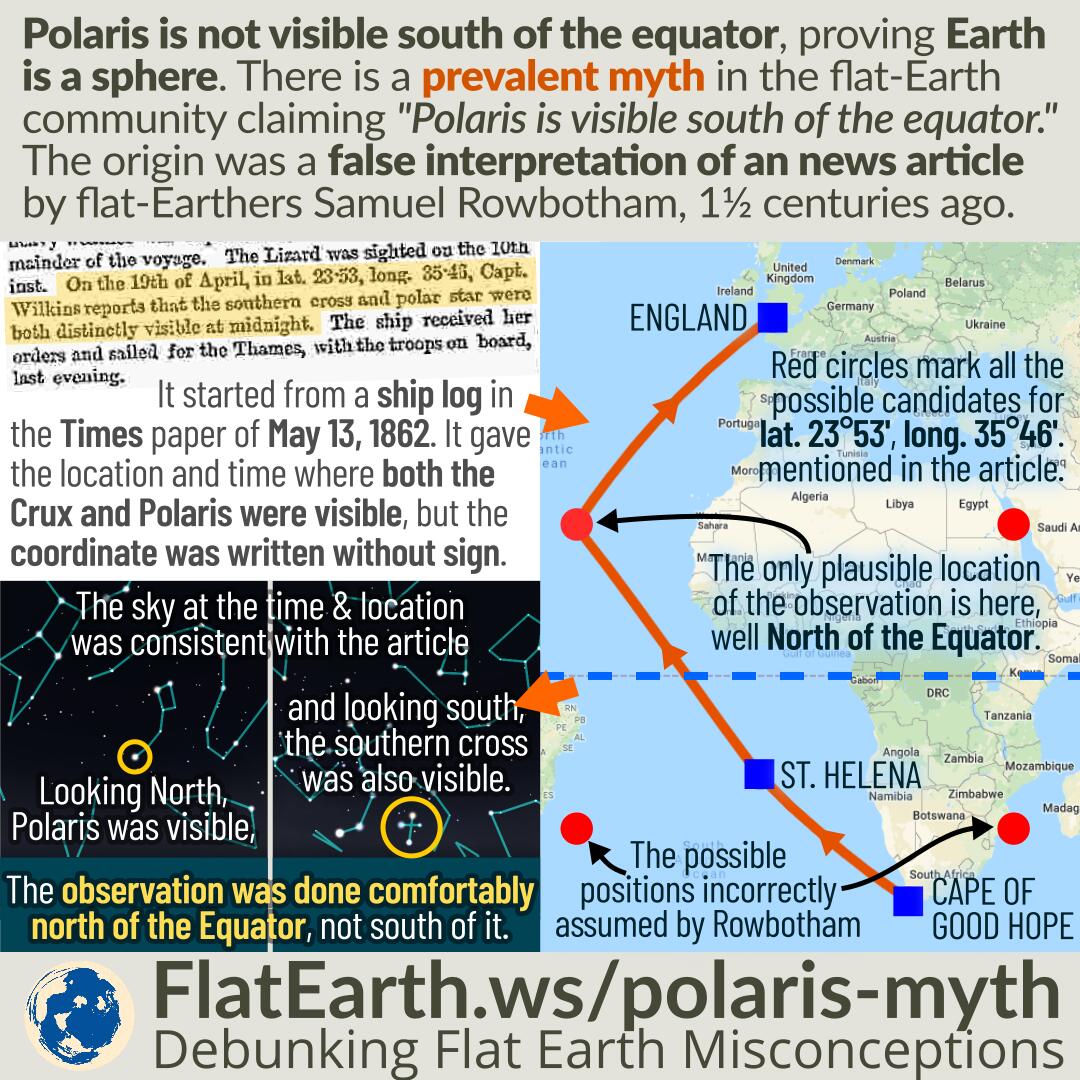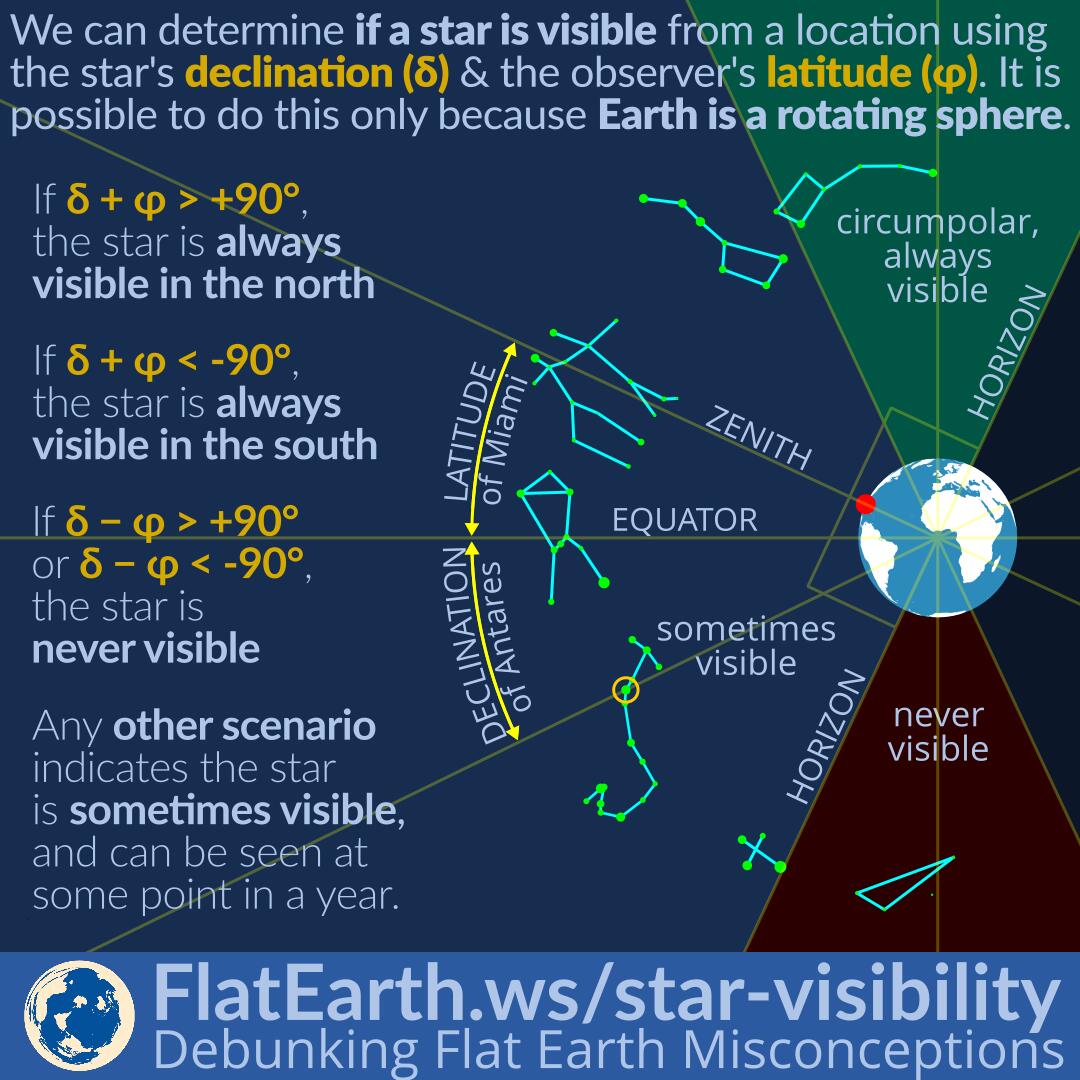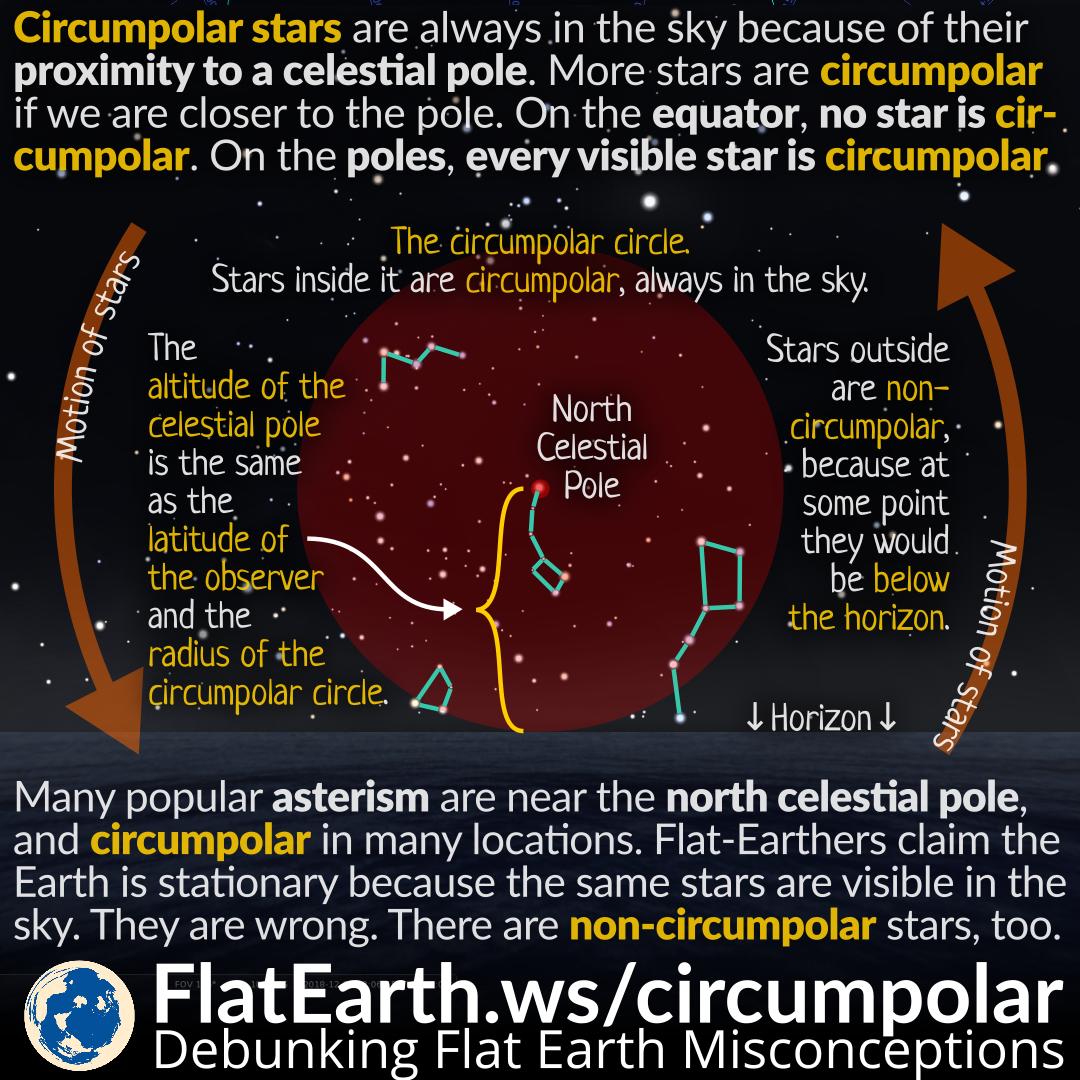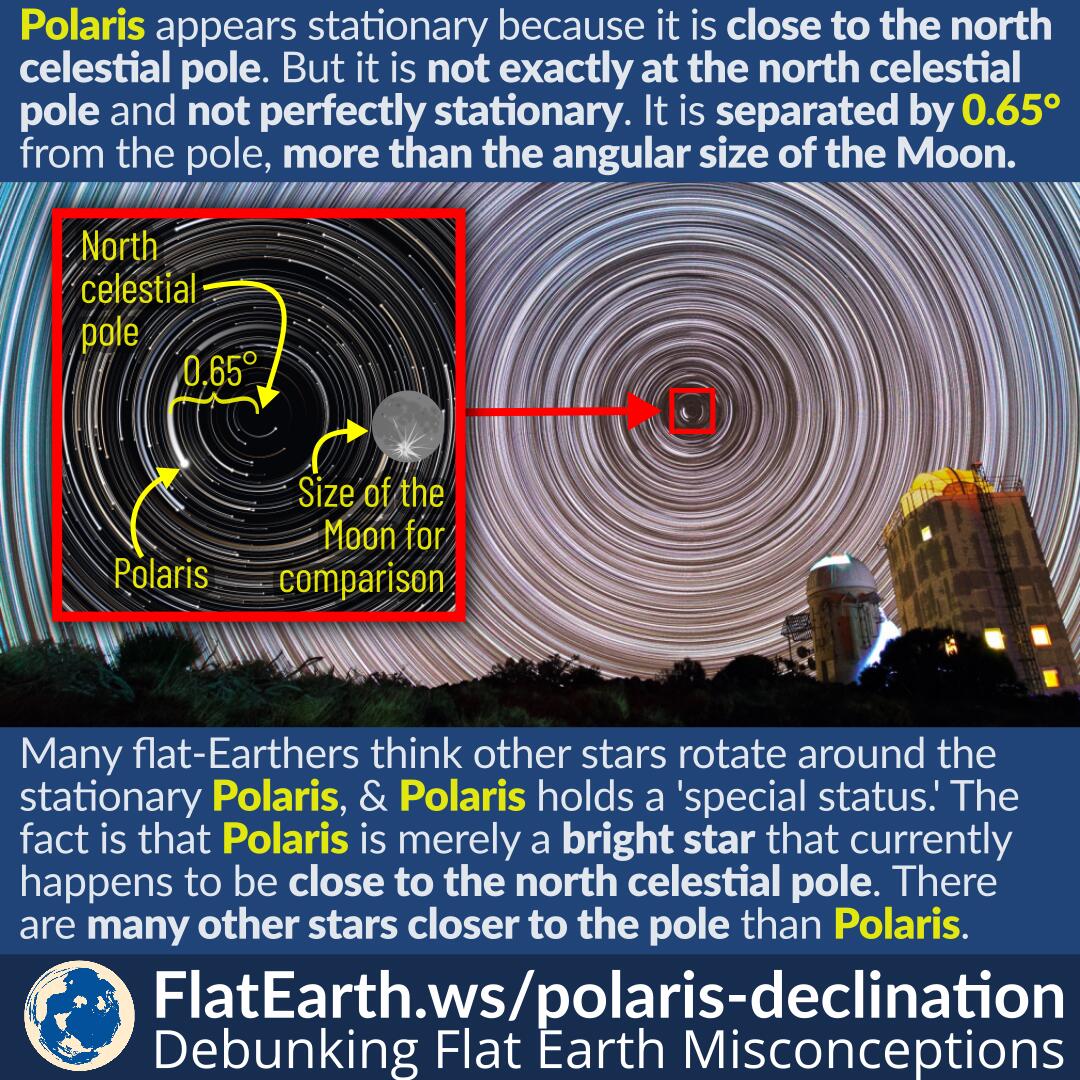Due to its almost +90° declination, Polaris practically cannot be seen from the south of the equator, and the fact is consistent only with the spherical Earth model. There is a prevalent myth in the flat-Earth community that claims Polaris is sometimes visible from the south of the Equator. The origin of the myth was an erroneous interpretation of a news article by flat-Earther Samuel Rowbotham, 1½ centuries ago.
Continue reading “The Myth That Polaris is Visible South of the Equator”






